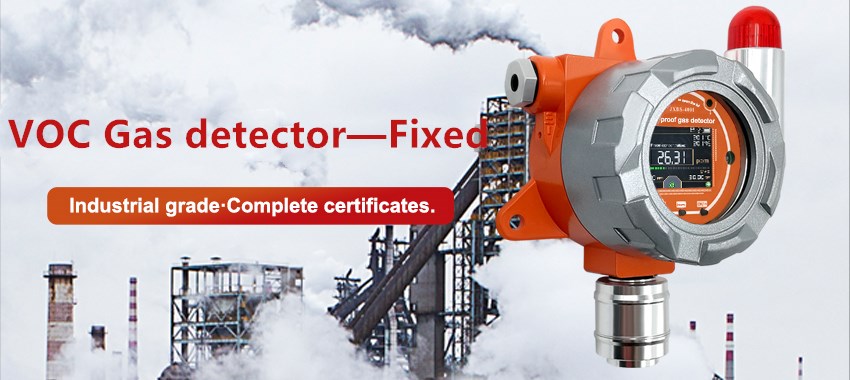Learn about PID VOC sensor
PID VOC sensor have a number of advantages over other VOC detection technologies. They are relatively inexpensive, easy to use, and have a wide range of detection capabilities. PID sensors can detect a wide variety of VOCs, including those that are difficult to detect with other technologies.

There are a number of different technologies that can be used to detect VOCs. One of the most common technologies is photoionization detection (PID). PID sensors work by exposing a sample of gas to ultraviolet (UV) light. The UV light causes the gas molecules to become ionized, and these ions are then dete.
How PID sensors work
PID sensors work by exposing a sample of gas to UV light. The UV light causes the gas molecules to become ionized, and these ions are then detected by the sensor.

The UV light is typically produced by a mercury lamp. The mercury lamp emits a broad spectrum of UV light, including wavelengths that are capable of ionizing most VOCs.
The gas molecules that are ionized by the UV light are then detected by the sensor. The sensor typically uses an electric field to collect the ions. The number of ions that are collected is then used to determine the concentration of VOCs in the sample gas.
PID sensor advantages
PID sensors have a number of advantages over other VOC detection technologies. These advantages include:
Low cost: PID sensors are relatively inexpensive to purchase and operate.
Ease of use: PID sensors are typically easy to use and require little training.
Wide range of detection capabilities: PID sensors can be used to detect a wide range of VOCs, including those that are difficult to detect with other technologies.
Reliability: PID sensors are typically reliable and have a long lifespan.
PID sensor disadvantages
PID sensors also have a few disadvantages. These disadvantages include:
- Sensitivity to humidity: PID sensors can be affected by humidity. This can lead to inaccurate measurements in humid environments.
- Sensitivity to interference: PID sensors can be affected by other chemicals that are present in the sample gas. This can lead to inaccurate measurements.
- Complexity of signal processing: PID sensors can produce complex signals that can be difficult to interpret.
Applications of PID sensors
PID sensors are used in a variety of applications, including:

Industrial safety: PID sensors detect VOCs in industrial workplaces to protect workers from exposure to harmful chemicals.
Environmental monitoring: PID sensors are used to monitor VOC emissions from industrial facilities and other sources.
Home air quality monitoring: PID sensors are used to monitor VOC levels in homes to protect the health of occupants.
Conclusion
PID VOC sensor are a versatile and effective technology for detecting VOCs. They are relatively inexpensive, easy to use, and have a wide range of detection capabilities. PID sensors are used in a variety of applications, including industrial safety, environmental monitoring, and home air quality monitoring.
Additional information
In addition to the advantages and disadvantages listed above, there are a few other things to keep in mind when considering the use of PID sensors.
One important consideration is the type of VOCs that need to be detected. PID VOC sensor are not equally sensitive to all VOCs. Some VOCs, such as alcohols and aldehydes, are more easily detected than others, such as hydrocarbons.
Another consideration is the concentration of VOCs that need to be detected. PID VOC sensor canbe used to detect VOCs at a wide range of concentrations, from parts per billion (ppb) to parts per million (ppm). However, the sensitivity of the sensor will vary depending on the concentration range that is being targeted.
Finally, it is important to consider the environment in which the PID sensor will be used. Humidity and other factors can affect PID sensors. It is important to choose a sensor according to the environment.